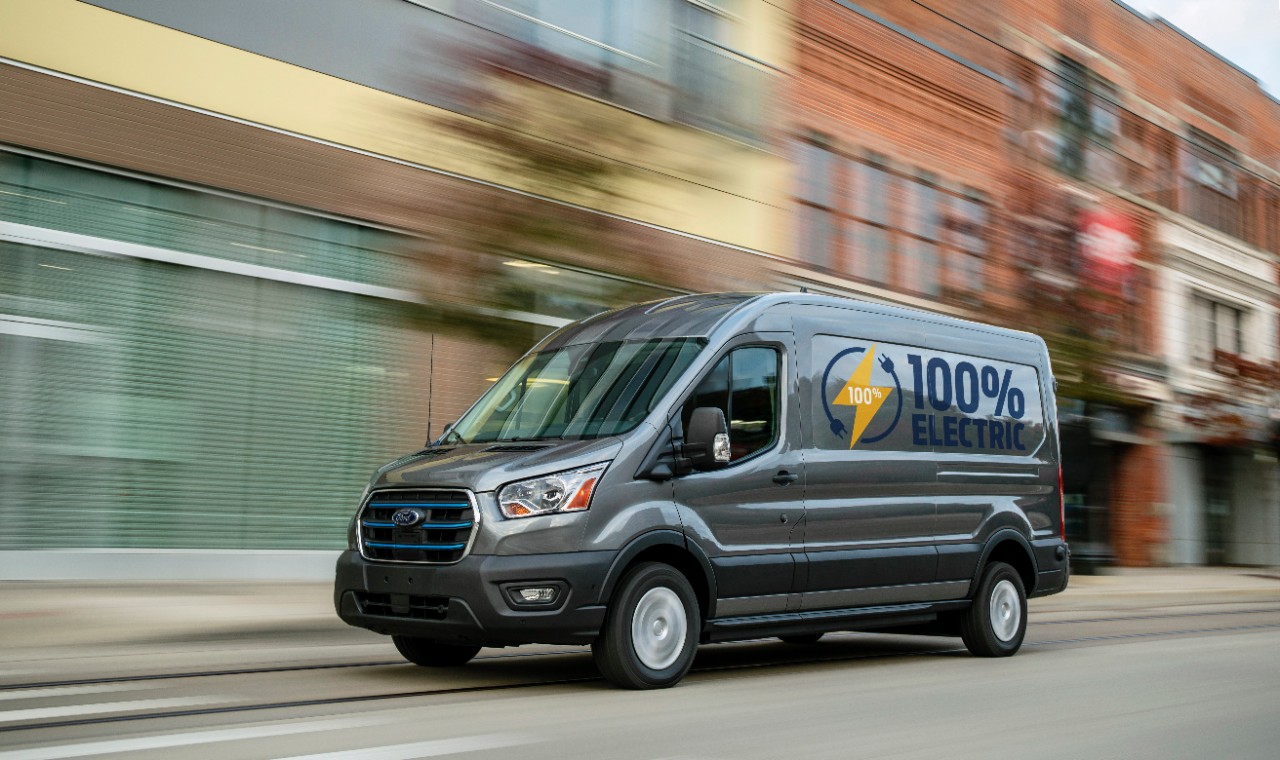Ford updated the Transit van this year with an all-wheel-drive system, color-matched bumpers, and lots of safety tech. Future Transit vans are going to have more powertrain options. Ford announced that the E-Transit is coming for the 2022 model year. The new EV vans will be constructed at the same plant as the rest of the North American Transits in Claycomo, Missouri.
Range Anxiety
Ford has been the leader in commercial vans for decades. The initial numbers for the E-Transit are not record breakers. The batteries and electric motors will produce 266 horsepower and 318 pound-feet of torque. The estimated range is 126 miles. This seems like an incredibly low number especially given the world’s mixed reactions to the Porsche Taycan being rated for 202 miles of range.
Since Ford has dominated the commercial van space, it also means that the Ford team has data for miles driven on those vans. The average commercial vehicle’s daily distance is 74 miles. The E-Transit has the ability to charge 30 miles of range in 10 minutes on a 115-plus-DC fast charger and approximately 45 miles of range in 15 minutes. The charge times are currently based on simulations. We will have to see what it looks like in the real world. The E-Transit features should make a move to an EV easier to swallow.
Capacity & Flexibility
The batteries for the E-Transit are located underneath the rear floor of the van and do not encroach on the cargo area. The rear suspension was adjusted to make room for the batteries and maintained the 487.3 cubic feet of cargo volume.
The E-Transite is also available with the Pro Power Onboard, which turns the van into your personal generator. It produces enough electricity to run power tools. Pretty handy if you are on a job site with no electricity.
EVs are the future, whether we want them or not.

There isn’t a current EV that this large enough for my family to use consistently. But a wave of EVs coming: the Rivian R1T & R1S, Tesla Cybertruck (maybe by 2025, j/k), F-150 EV & Mustang Mach-E, GMC Hummer EV, Lucid Air, Bollinger B1 & B2, Polestar 1 & 2, and more. There is going to be an option soon that is functional for a large family, possibly a passenger version of the E-Transit someday too.
We will see.


Leave a Reply